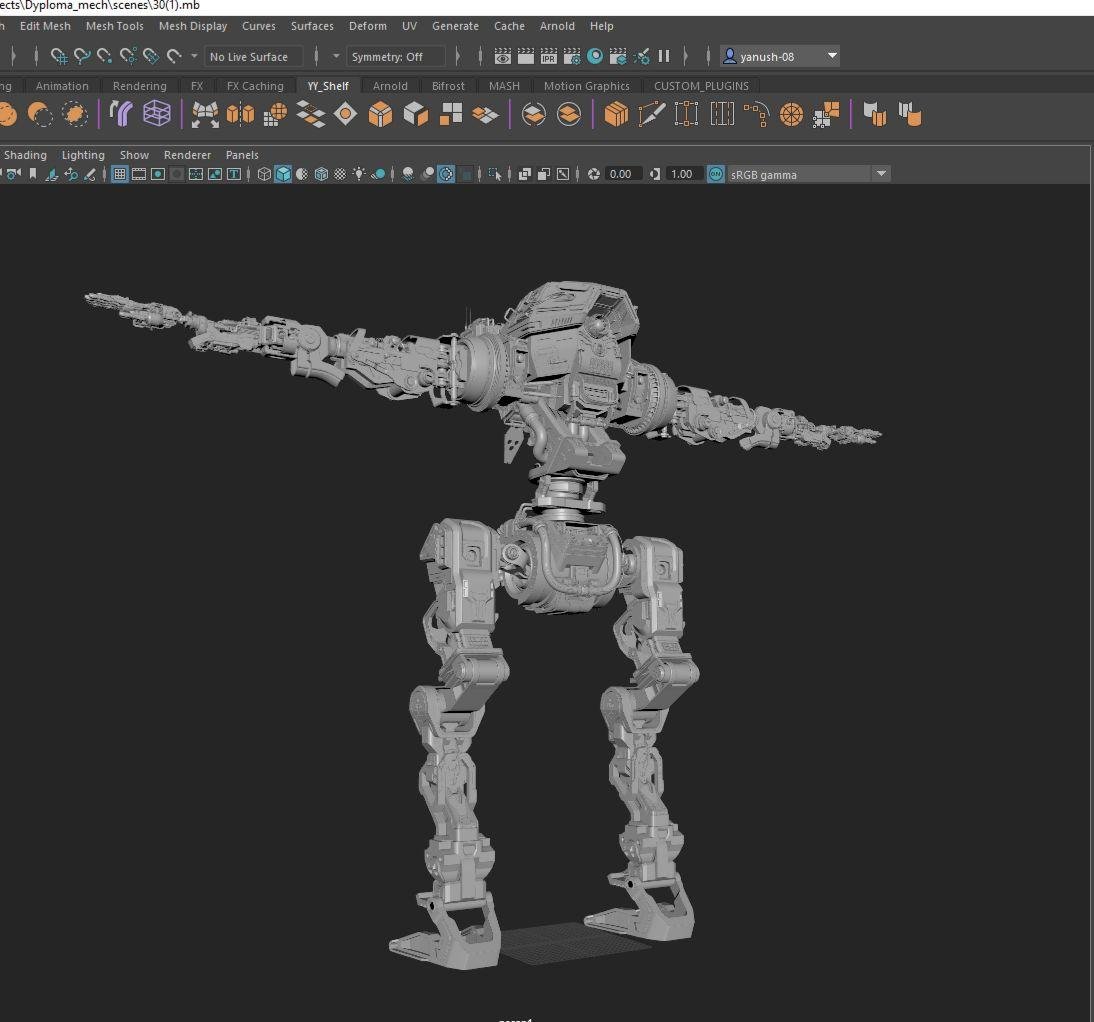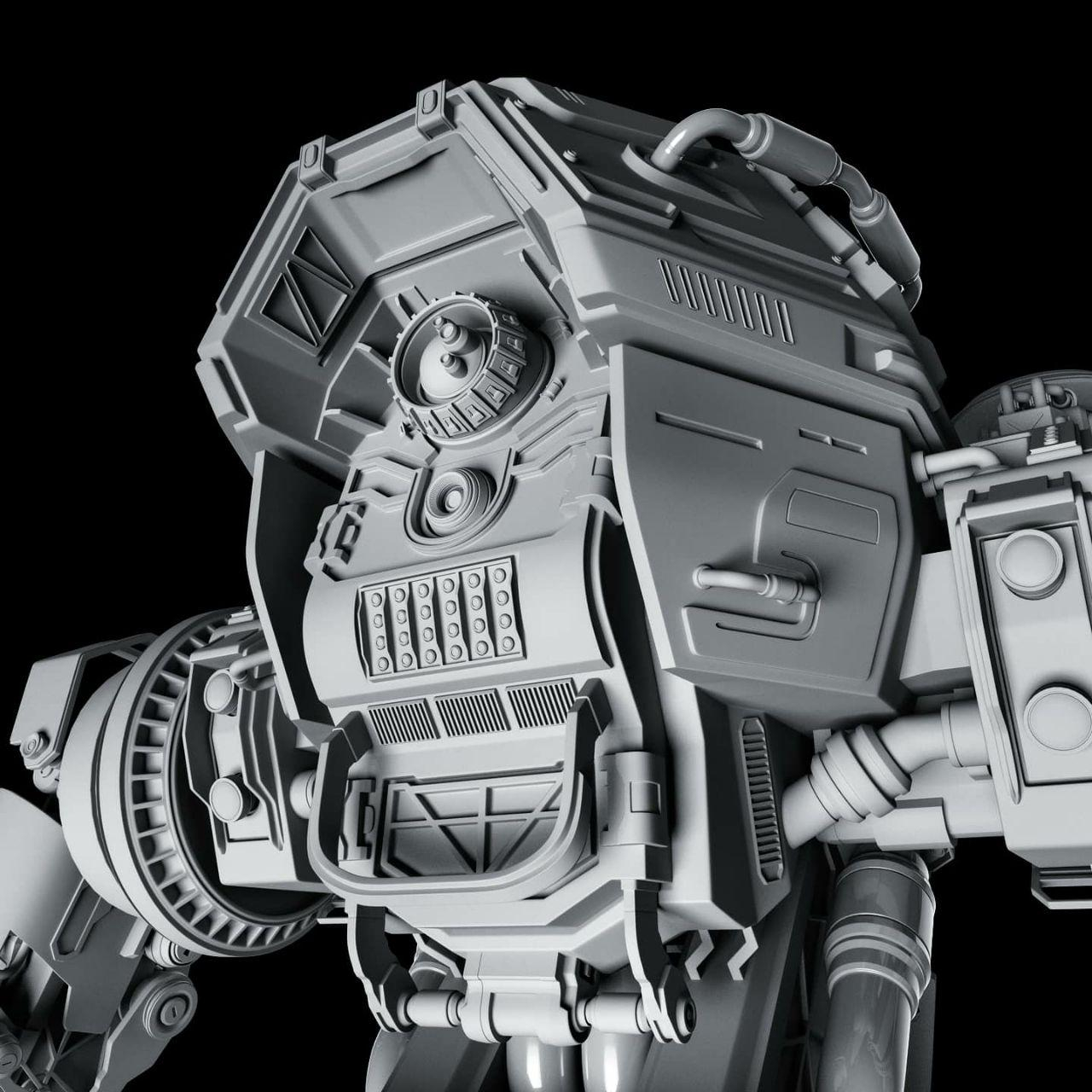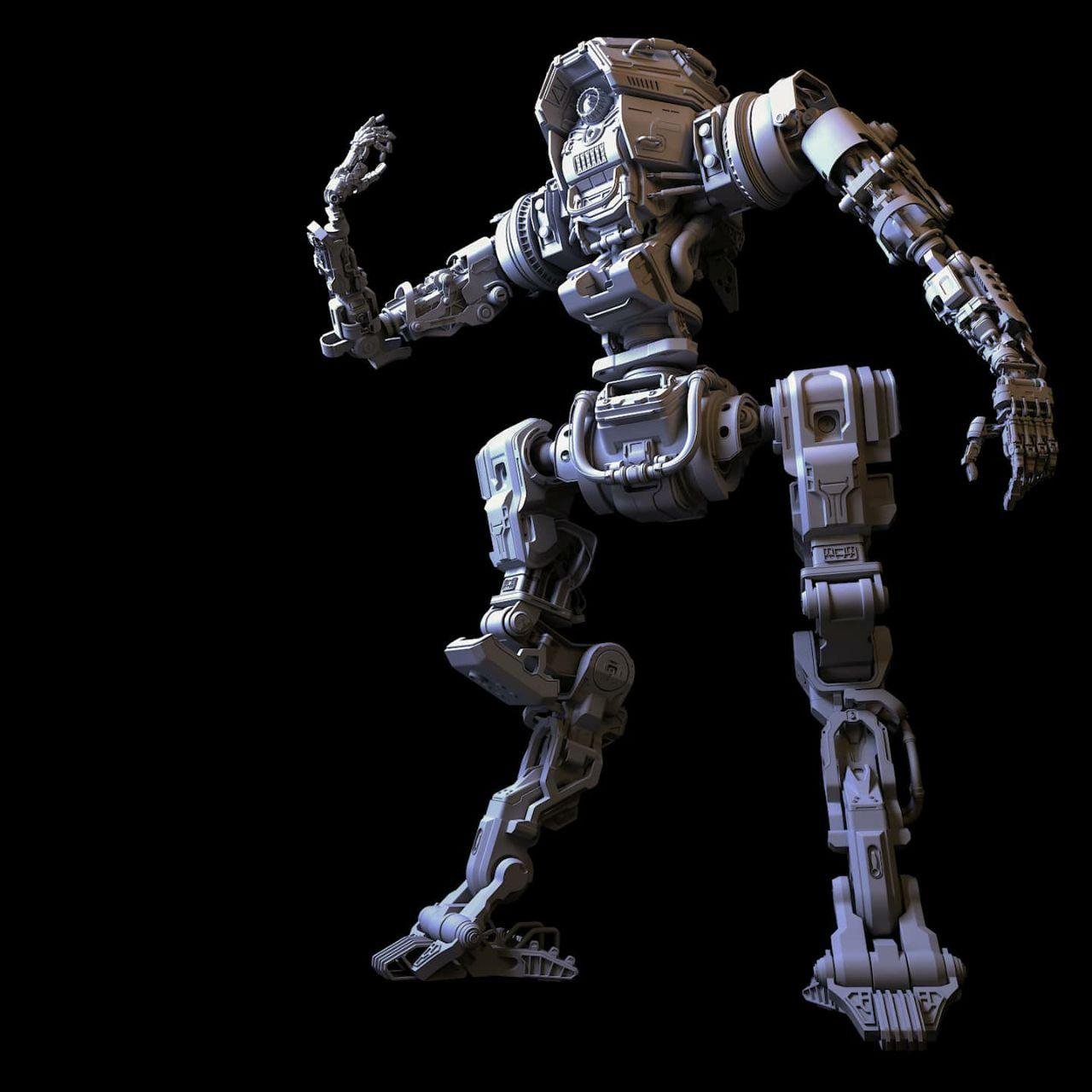How to unwrap a VERY HIGH-POLY ONLY model in Maya 2020? Help me please, I wanna die...
Hi, everyone! I hope you are doing well! I have an issue with my graduation project. So I decided to model a mech that is very high detailed and complex, so I modeled each piece of it separately and just placed it as it is. I was learning the software and modeling fundamentals as I was doing the project. The topology is relatively good (mostly quads and sometimes tris) and I ended up with 2500+ pieces. Some are very complex, some of them are simple shapes. So my question is: how the hell do I texturize it???
Because Substance Painter won't handle that amount of polygons I guess.
I was planning on splitting the mech to it's main parts (arms, legs, upper body, lower body, etc.) and throw it into Substance Painter to texturize separately and then gather everything in one scene. But for that I need to unwrap it all.
And oh boy I do NOT want to sit one extra month unwrapping all the pieces by hand.
So my question is how would you approach to this problem? Thank you for the answers in advance!
UPD:
I don't have low-poly, because I thought I AM making it low-poly...
I can put some screenshots of the wireframe if needed and polycount is 40mill+ I think.
Doing this project from the scratch is not an option since I have a lot more to do (pilot for the mech, hangar, filling props, etc) and the deadline is 'till Feb 2021
Also I was planning to do close-up renders to show all the details I was working on, so the texture quality should be very good as well.



Because Substance Painter won't handle that amount of polygons I guess.
I was planning on splitting the mech to it's main parts (arms, legs, upper body, lower body, etc.) and throw it into Substance Painter to texturize separately and then gather everything in one scene. But for that I need to unwrap it all.
And oh boy I do NOT want to sit one extra month unwrapping all the pieces by hand.
So my question is how would you approach to this problem? Thank you for the answers in advance!
UPD:
I don't have low-poly, because I thought I AM making it low-poly...
I can put some screenshots of the wireframe if needed and polycount is 40mill+ I think.
Doing this project from the scratch is not an option since I have a lot more to do (pilot for the mech, hangar, filling props, etc) and the deadline is 'till Feb 2021
Also I was planning to do close-up renders to show all the details I was working on, so the texture quality should be very good as well.




Replies
And yes, it was inspired by Titanfall btw
But, next time...
whether you're working on films or games you will be baking stuff - what you have there is not going to get through a rigging and animation pipeline without ruining plenty of people's day.
couple things will help keep maya running smoothly during retopo:
- decimate a version of the highpoly to use for retopo
- load as alembic cache
- break into pieces to retopo individually (i.e., just the legs, just the torso)
- periodically split your quad draw mesh into separate objects (i've found this to make the biggest impact on performance)
- dont retopo with symmetry turned on. just do half, unwrap UV's, and mirror.
- retopo by hand will be the fastest thing considering the entire pipeline. when you retopo by hand, you'll make topology that helps support easy unwrapping. You'll get to know your model on a UV shell by shell basis. This will gear your mind for texturing, making that all go smoother.
also, consider design next time: may benefit both aesthetics and workflow to use some large, simpler pieces. big pieces of armor to cover thighs, chest, etc.
Also thank you very much for the answer!
Focus on a small scope, just the head for example. Finish just that, to completion, to learn the process.
Then apply your learnings to the rest of the mech, if there's time. You'll be redoing things a few times, as you learn what works and what doesn't.
Get really good at making one thing well, rather than making a whole lot of halfway.
Also I was learning software, basics and fundamentals while working on this mech. I just want to finish this as soon as possible and star working on my own project to learn proper workflow, techniques and, most importantly, fundamentals.
Some screenshots of the wireframe. Don't mind the design. I've got some feedback on it and I know it's pretty bad. I am currently fixing the topology getting rid of some non-required edges piece by piece
UPD:
Topology is 90% quads, 10% tris. No n-gons. Some pieces have supporting edges, some are beveled (bc I've learned the tool during the process) \( "_ )/
Polyshell per polyshell. One by one. Dont give up.
We do basic uvs during the modeling. Just simple cuts + unfold.
If you would use this model with displacement you would need even more poly on some objects.
Thank you, I will try to make UVs as good as possible because I never really unwrapped any model yet. About the displacement... Is it really needed with this much detailed already implemented into geometry? Or you suggest i.e. making some seams between the panels, skrews, bolts, etc?
You can use materials that have box projections for textures and then use an edge-detection node to blend it with other materials. This is dependent on what renderer you're using.
Here's a tutorial for arnold that shows the technique I'm talking about:
Making UVS for complex stuff is just part of the game if you work for Film.
This robot here will need some UDIMs to get a decent pixel density. But first you have to create clean unfolded UVs.
Both are doing a decent job for fast automatic uvs.
Maya does have less distortion but a lot of small UV shells.
If you use projections in Substance for painting this could be a solution.
You would have to use UDIMs with parts not bigger that this upper leg. Otherwise you wont get enough texture resolution for closeups.
I would do first an automatic UV pass in Maya or Substance. And pick the most visible parts and do UVs by hand.
Depending on the time you have.
For Film Assets straight UVs and texture space usage isnt that important than for Games. You doint need super clean UVs.
Its more or less a matter of how much time you have todo the UVs. Sure overlaps and extreme distortions arnt welcome.
Cause of UDIMs you have a much higher texture resolution and this is "hiding" a lot of UV troubles.
Create 10 Parts for UDIMs. Bring one by one into Substance to create the UVs.
Bring them back to Maya and decide wich Polyshells you like todo by hand.
I assume in around 5h you have decent enough UVs. Invest 16h and you have really good UVs.
Note: If you deliver those UVs for a Game your Head will get bitten off.
And i wont show those UVs on Artstation.
You are in smooth preview mode. Turn that off and you see the real polycount.
When I tested unwrapping, what I did is first i did Planar Uv's, then I auto-cut it, then unfolded it with Unfold3D and then with Legacy unfold just to make sure it unwrapped better both horizontally and vertically. And then layout. Sometimes I was getting similar results to yours showed above, but most of the time with more simple objects it did a decent job.
Of course it doesn't fit the game production workflow at all, I understand that. But since I am not planning on putting it inside game engine, I think I'm good
I will definitely try your method! Just need to finish optimizing the model to lower the polycount.
And without UVs you cant.
Super late to the party but bifrost might help:
https://www.youtube.com/watch?v=p6EuH5o_CuQ
Have you watched that video? That wont help doing UVs.
Process:
1. Select one piece of the model (or more) and apply under Mesh Display > Soften/Harden Edges (you want hard edges on "sharp" corner and stuff for later UV cutting)
2. First step in UVs apply "Camera-based" UVs
3. Now go to "Auto-Seams" option box and there chose "Cut along hard edges"
4. Select all the UVs and Unfold and then Layout to pack them
i won't use auto unwrap, even if convinience, still will use cut for manage the UV's and UV islands. to save on the time can make instance too
I have found that in Maya using auto unwrap on very high poly objects sometimes crashes. But doing separate UV projections always works. Sometimes doing a UV projection to split the mesh and then auto unwrapping in chunks works too.
The auto unwrap in Houdini is much better than Maya though. If I was working on a very high poly object I might just go to Houdini to unwrap it instead of using Maya.
that's fair - my point was don't be dogmatic about it.
j